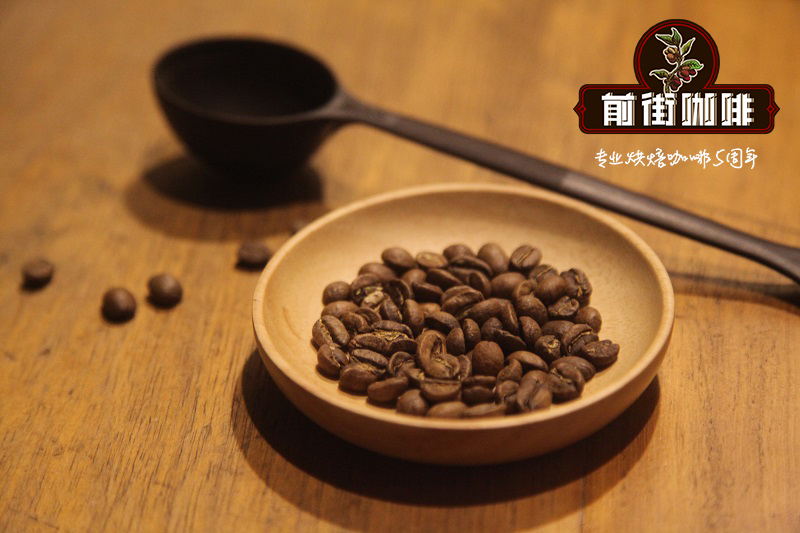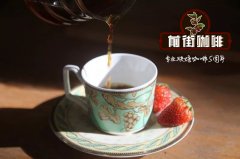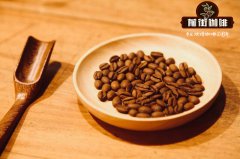Starbucks Yunnan Coffee Bean Story introduction to Starbucks Yunnan Coffee Bean "the first Ten feet"

Professional coffee knowledge exchange more coffee bean information please follow the coffee workshop (Wechat official account cafe_style)
At the beginning of last year, the editor already drank Starbucks, a Yunnan coffee bean from a single producing area in China. In a Starbucks store, a cup of steaming hand was done as soon as his eyes were closed.
It doesn't sound difficult. Is that right?
No, no! It's so hard! Not only difficult but also patient-it took nearly 6 years for us to drink this coffee bean. What's the concept of six years? I was supposed to take part in the college entrance examination, but suddenly you went back in time and you held your sixth-grade Chinese test paper.
Like many Starbucks heavy dependents, the editor only knew when the coffee beans were still hanging on the trees. Unexpectedly! It looks like this!
The original is so bright that it looks like a berry that will be so sweet. The original appearance is beautiful, behind the back is a bitter coffee? It is said that from hanging seedlings to growing into coffee berries like the one pictured above, farmers have to take good care of them for four or five years.
This is not difficult. Coffee trees are really like children to curry farmers. It is common to get sick and cry. Once a coffee tree gets sick, it takes at least two years to recover and continue to produce coffee. But you know that in Pu'er before 2012, very few farmers could be found and prevented in the early stage of coffee tree disease, and a few years' harvest was wasted.
Then Starbucks came, and in 2012 they set up the first coffee grower support center in the Asia-Pacific region in Pu'er. They selected suppliers through a series of complex audit criteria, which they called the growers' C.A.F.E. Practices.
At first, the local farmers did not know the Starbucks brand, and they felt that the certification conditions and system were too complicated. They all said that they would not make an appointment. Goodbye.
But the editor said that in the early morning of their arrival, at least dozens of cars from farmers and farms were queuing up for acceptance, and they were getting hotter and hotter day by day in a row, so how could it have changed in six years?
So during this period of time in Pu'er, the editor secretly observed that Starbucks had a group of highly educated agronomists who played poker with farmers every day:
Don't know how to get rid of the disease? Agronomists teach door-to-door! Don't know how to apply fertilizer effectively? The agronomist gives you free training! Afraid of buying fake fertilizer? The agronomist helps you to buy in bulk! It's a good thing to see you for a long time.
You think it's over? Naive! Many people may not know that coffee beans in the world, to reach a certain standard is a uniform price, equivalent to futures.
But buying at the same price is easy for some farmers to take advantage of loopholes and make a full deal with good and bad beans. How to solve the problem at Starbucks-- more money!
Starbucks began to carry out the principle of "high quality and good price". To put it bluntly, it is to buy good goods at a high price. If the beans of Ka Nong are of high quality, then I am willing to buy them at a certain amount per jin on the basis of the quotation of the day. Sure enough, if you have the money to do whatever you want, the good beans in Yunnan are basically bought by Starbucks!
The first ten feet of growing coffee can only be completed by hand-picked fruit after preliminary processing, including initial screening, peeling, fermentation, drying and other steps.
The so-called cup review is to drink cup after cup and use your mouth to determine whether the beans are good or not.
It is said that Starbucks cup reviewers taste an average of 200 cups of coffee a day, with a peak of 300 cups.
The editor was scared as soon as he heard this. After all, according to common sense, ordinary people can hear their heartbeat clearly after drinking three cups of coffee a day.
But she soon discovered that the original cup review was not to drink cup by cup, but to taste a little bit of each cup, take a quick sip with your mouth, atomize the coffee in your mouth, fill your mouth with aroma, and then spit it out.
The mouth and speed of the cup reviewers are really good, and the editor saw with his own eyes that the cup reviewers were testing the cup at a very fast speed while sketching on more than 20 paper fliers on the project.
Once upon a time, a powerful cup critic rejected a batch of coffee beans because he tasted the mixed smell of sweet potato. Everyone present had a question mark as if to say, "Don't lie to me if I read less." the farmer also firmly believes that there is absolutely nothing wrong with his coffee beans. Later, when I went to the farmer's house, I found that I had put the harvested coffee beans and sweet potatoes together.
Divine mouth, awesome.
So after six years of bitterness and pride, the editor recalled that when this coffee bean came on the market, every Starbucks partner in China smiled and cried. It was not until she participated in the whole journey that she understood the significance and story behind this coffee bean from a single producing area in China, and its baking process was completed entirely in China-Starbucks selected a Shanghai roaster and completed the journey from "a raw bean to a cup of coffee" in China.
Remember when it was said on the big list that only 25 farmers attended the training of Starbucks Coffee growers support Center for the first time? At the beginning of this year, this figure has become a total of nearly 17000!
Wow, I feel that today's popular science is super literate, super connotative, and super socially responsible.
The editor, who has gone to Pu'er inside Starbucks and loves bags like life, is even more experienced, she said:
Bags, you can buy two less.
But I go to Starbucks every morning at work.
I'd like a glass of Grande hand made in Yunnan.
Important Notice :
前街咖啡 FrontStreet Coffee has moved to new addredd:
FrontStreet Coffee Address: 315,Donghua East Road,GuangZhou
Tel:020 38364473
- Prev

The fourth place in Uganda Raw Bean Harvest Flavor Competition is the flavor description of Sunshine Coffee.
Professional coffee knowledge exchange more coffee bean information please follow the coffee workshop (Wechat official account cafe_style) every year major coffee producing countries in Africa hold a national raw bean competition, called the Harvest season Flavor Competition (The Taste of Harvest; TOH), similar to the extraordinary Cup (Cup of Excellence) in Central and South America, TOH has become a discovery of Kenya and Egypt.
- Next

Yunnan coffee is favored by top coffee merchants, Yunnan small grain boutique coffee market has great potential.
Professional coffee knowledge exchange more coffee bean information Please follow the coffee workshop (Wechat official account cafe_style) Coffee craze is spreading to China. Not only are there many cafes in first-tier cities, but Pu'er in Yunnan Province, which is located in the Tropic of Cancer, has also become the hometown of Chinese coffee. Many foreign coffee merchants, such as Nestl é and Starbucks, will even buy coffee beans in Pu'er, and the local coffee beans are sold to more than 30 countries around the world. France
Related
- Detailed explanation of Jadeite planting Land in Panamanian Jadeite Manor introduction to the grading system of Jadeite competitive bidding, Red bid, Green bid and Rose Summer
- Story of Coffee planting in Brenka region of Costa Rica Stonehenge Manor anaerobic heavy honey treatment of flavor mouth
- What's on the barrel of Blue Mountain Coffee beans?
- Can American coffee also pull flowers? How to use hot American style to pull out a good-looking pattern?
- Can you make a cold extract with coffee beans? What is the right proportion for cold-extracted coffee formula?
- Indonesian PWN Gold Mandrine Coffee Origin Features Flavor How to Chong? Mandolin coffee is American.
- A brief introduction to the flavor characteristics of Brazilian yellow bourbon coffee beans
- What is the effect of different water quality on the flavor of cold-extracted coffee? What kind of water is best for brewing coffee?
- Why do you think of Rose Summer whenever you mention Panamanian coffee?
- Introduction to the characteristics of authentic blue mountain coffee bean producing areas? What is the CIB Coffee Authority in Jamaica?

